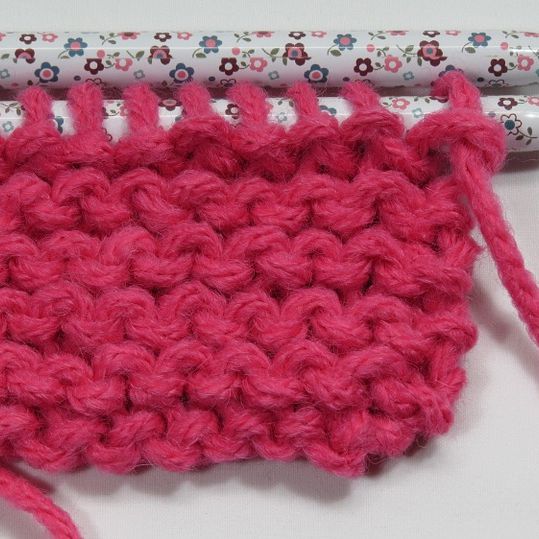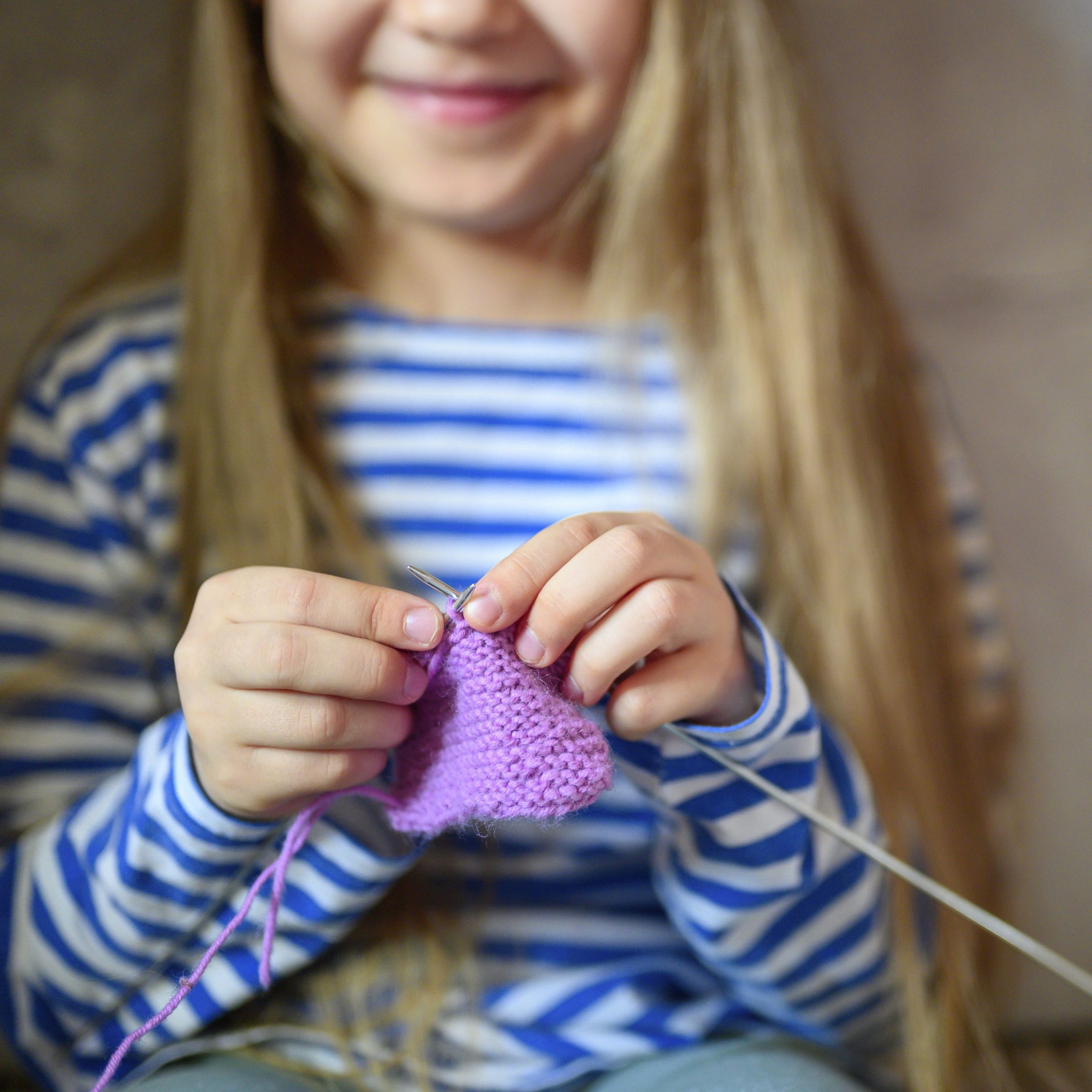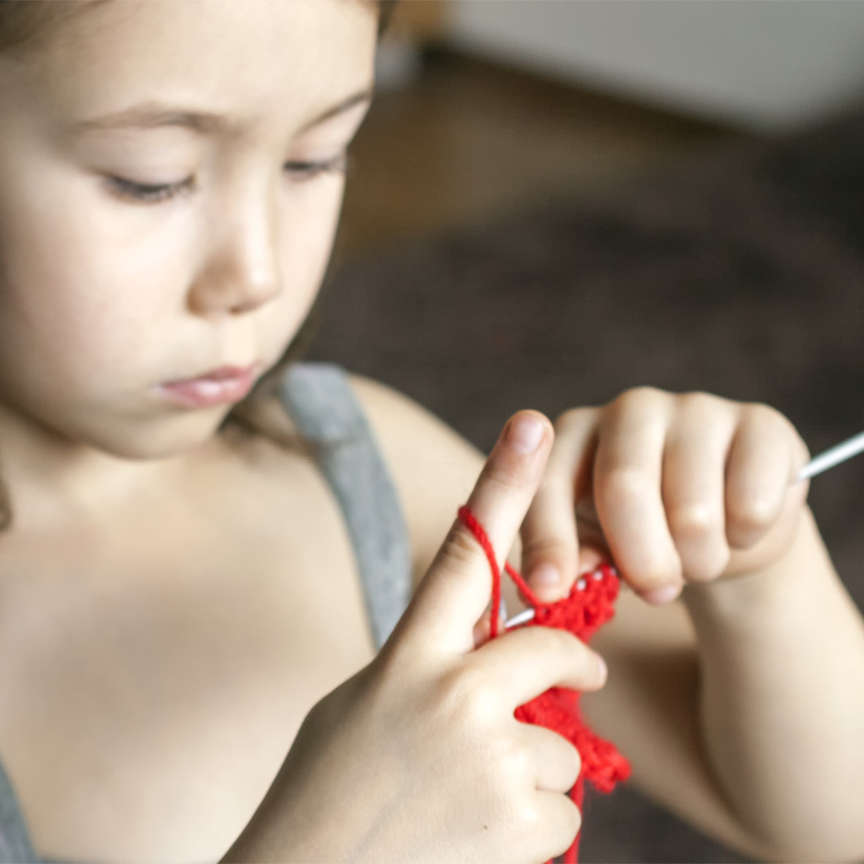Knitting can be a calming hobby that yields beautiful handmade items. After you learn the “knit” stitch and the “purl” stitch, the sky is the limit. Below are some tips for beginner knitting to keep in mind.
Tools for Beginner Knitting
Start your first beginner knitting project with the right tools. This will make learning easier.
Knitting needles come in a lot of different materials. Wooden or bamboo ones typically work best for beginners. Make sure you purchase ones in size US 8 (5.0 mm) or US 9 (5.5 mm). Needles in this size and material are easy to hold (especially for small hands) and allow you to see your stitches more easily.
You will also need yarn to start knitting. Start with acrylic or cotton yarn because they are easy to work with. Make sure it isn’t too dark or light of a color because this might make the stitches hard to see while you work.

Knit & Purl
The knit stitch is the basic stitch. If you know this, you can start knitting and have functional projects. This is a great way to start. It will help you master the knit stitch.
Later, you can add the purl stitch. The purl stitch is the “backwards” version of the knit stitch, and knowing both will allow you to use a lot more patterns.
Gauge
It’s a good idea to use a pattern in which gauge doesn’t matter. Potholders or scarves are good options. However, if you want your project to come out exactly the size of your given pattern, you might need to check your gauge.
A gauge is a measure of how many rows and columns of stitches there are per inch. To test it, knit a test swatch of about 5 inches square in your given pattern. Then, count the number of stiches and rows you have in a four-inch area (this is usually the size needed for this needle and yarn combination).
Keep in mind gauge is only important if you need your project to come out exactly the size of the pattern you’re using.
Tension
Tension is how tightly you hold and pull on your yarn. You want your tension to be the same throughout projects so the rows and stitches look even. It’s also good to avoid tight stitches because it makes knitting more challenging. However, if your stitches are loose, they might fall off the needles. It’s best to be right in the middle.
At first, maintaining the same tension throughout a project will be difficult. Practice will improve the consistency of your tension when doing a beginner knitting project.
These tips are great for beginner knitting, and they will allow you to make beautiful projects you can donate to various charities.

Beginner Knitting for Charity
It’s best to get some practice before you make gifts for others. When you’re ready, Knit a Square is a great place to start. They collect 8″ knitted and crocheted squares to make into blankets for those in need.



